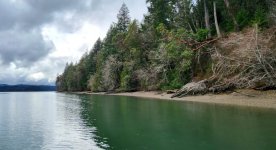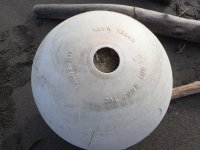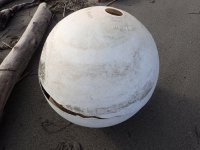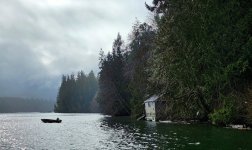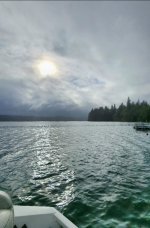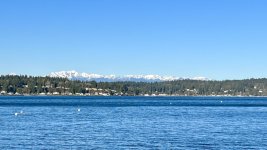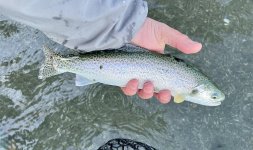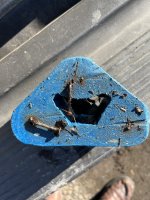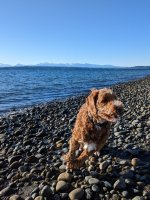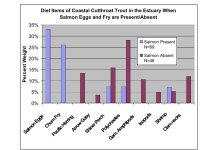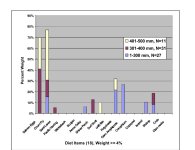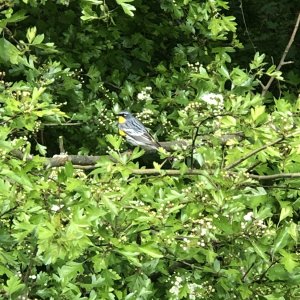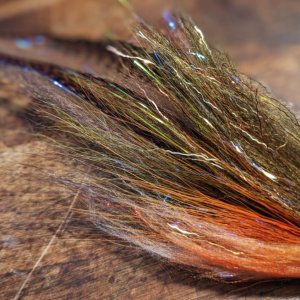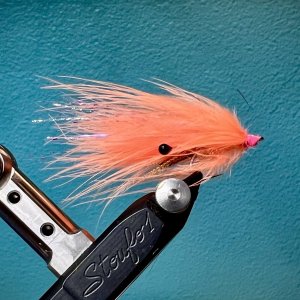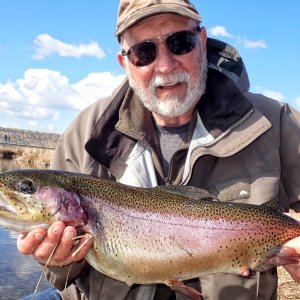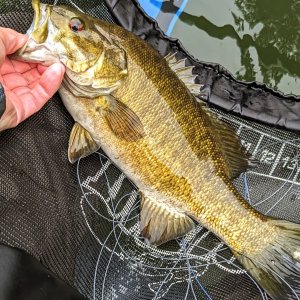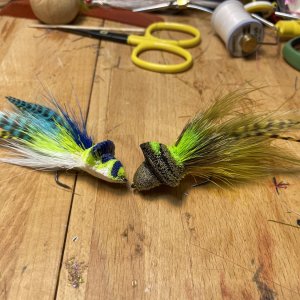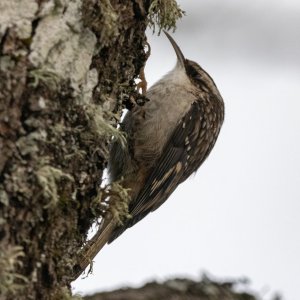I've found a couple beaches in the SS to have Coho pretty frequently on outgoing in schools of 100. All in the ~10/12in mark Even if I am not fishing and walking the dog they make their whereabouts known crashing surface. Two winters now I see them hang out at beaches for long periods of time. I wonder if you go back to those places you saw them if they are still around?
No doubt they make a tug-less day fun but I don't really want to target the tiny ones.
Where are the cutthroat that are more frequently around the SS go in the winter? Still in streams or do they move out to other water?
View attachment 51691
"Specifically, Coastal Cutthroat Trout were significantly closer to their natal stream in the fall than those fish captured in winter, spring and summer."
So if they're basing that off the cutthroat's native stream, the 11.7 km (9.2 ± S.D.) from the mouth of their natal stream average is likely most driven by season with Winter and Summer probably the most dispersed. 10mi is about Harstine Island and East, big bonus for the Kitsap side.
In the time I've been regularly fishing the south sound, and in the general areas I tend to focus on, I've seen a bit of a cycle if you will in regards to where I regularly find large numbers of coho. It seems I'll find some very consistent areas that I can count on for a couple few years, then things change a bit. No idea what would account for that exactly. That said I also have areas where I do find them fairly regularly even if not in huge numbers. To me they seem like wanderers in a sense. I may consistently see large numbers of them for two or three seasons in one area, then the next season that area doesn't produce much but I start seeing them in a new area. I say "area" because I am fishing from a boat so I have the luxury of fishing anywhere. So maybe it's, say, a stretch that is between two points that may be an eighth of a mile stretch where I know I can kinda just slow cruise in that area until I see signs of them. That mobile advantage means I don't necessarily need to be as focused on the particular tide at the time. They may like to hang out on a certain beach or point at a certain part of the tide, but I tend to just go to that area and move around till I see them. Obviously on the beach it's more productive to figure out what part of the tide you find them the most, like you mentioned in your post regarding an ebb tide at a couple beaches. All that said, if you find them regularly on a certain beach at a certain tide for a couple of years I would definitely be interested in focusing on that same beach/tide until something changed and I stopped finding them with the same regularity.
Its also worth noting that the south sound is quite large, so while I am in a boat and able to cover more water, there's a lot of the south sound I don't/cant regularly focus on, so I can't speak specifically to the waters where you spend the bulk of your time.
I'm with
@Stonedfish in that I don't believe too many cutts are spawning just yet. I'm certainly no biologist though and don't claim to be an expert on such things by any stretch. The problem with cutthroat, IMO, is that its often tough to tell if they have truly moved elsewhere or if they are just not active/wanting to eat flies at any particular time, or some other behavioral change. If I fish a spot for a bit, don't catch anything, don't see any fish following flies or showing themselves on the surface etc I am never sure if that means there are no fish present, if they just aren't interested in the flies I've shown them, if they just aren't actively feeding etc. Lately I haven't been seeing a lot of surface activity from the cutthroat in general, even in areas where we are catching good numbers of fish. Its my belief that tides are important not always because it makes the fish move into a certain piece of water, but more because water movement kinda changes their attitude in regards to eating. Have you ever arrived at a beach with no current movement, started fishing for an hour with zero action and then the water gets moving and suddenly you're catching some fish? I personally don't believe those fish are just roaming around a large area following the current, I tend to believe that they are generally there all along and instead when the conditions are favorable to them they just sort of "wake up" and get active. So at times I believe it's not a matter of them having moved, but rather at that particular time the conditions just don't have them focused on active feeding. Its my personal belief that this time of year those periods of ideal conditions are a bit more important in regards to catching some fish compared to say the fall when I find I can catch some fish in less ideal conditions more frequently. What exactly attributes to that I've never been sure.
Also, as Brian mentioned, I think the food sources they focus on this time of year tend to change as well. I find them to be a bit less likely to actively chase down baitfish and bigger patterns and more focused on smaller stuff. Doesnt mean you can't catch them with those patterns, but I do find them to be less responsive to that stuff, especially in less than ideal conditions, compared to other parts of the year. Of course when everything lines up and conditions are to their liking you can certainly experience that aggressive behavior and catch them with relative ease.
Like Brian I am not a big fan of fishing tiny stuff. Just my personal preference. I also feel I've never truly cracked that code. I've caught fish on tiny stuff, but can't say with any confidence that when I find them sipping small that I have that scenario perfectly dialed in. That side of this fishery has always felt like it was just out of my reach in terms of figuring out consistent success. I've had moderate success with various flies/techniques but never totally cracked the code and over the years have just decided I don't really enjoy that type of fishing so if I find fish feeding on tiny shit I tend to just cover them with my standard flies and move on if they aren't going to respond. Of course again I'm in a boat so moving on is easy. Back when I fished the beaches a ton I definitely spent more time trying to get those fish to eat something.
One last thought, when I don't see signs of fish activity or fish that are obviously feeding, I personally don't spend a lot of time in the area. Without some sort of positive or negative visual feedback it's tough to figure out if the fish are just not interested in my flies, just aren't really interested in feeding, or just aren't there. If I have two anglers fishing in my boat they are almost always fishing two different flies that I have high confidence in. If we pull in and fish a stretch of water without any takes, hookups, follows, and aren't seeing surface activity, then I'm not likely to switch flies and keep fishing the same water. To me it just becomes too much of a guessing game and without some sort of visual clues I'm more likely to just move on. In a constantly changing environment that has so many variables it can be tough in that regard. If you go fish Rocky Ford and can see a fish in front of you you have the option to stand there for two hours changing flies/presentations and watching for a reaction. This can be the same in productive streams or lakes you know well....you know you're showing flies to the fish it's just a matter of tweaking things till you crack the code. The sound often doesn't present that luxury, so rather than focusing on one area where there may or may not be any fish currently present and constantly changing things up, I tend to focus on fishing patterns/techniques I have confidence in and change locations until I find agreeable fish. But no doubt this approach is much easier when mobile in a boat.
I've caught my share of cutthroat and spent an awful lot of time on Puget Sound, but in many ways I'm no more knowledgeable about the behavior of these fish than I was when I started. They can be quite an enigma in this ever changing environment. It's a large part about what I love about this fishery. It never fails that anytime I start to think I have something figured out they go and throw me a curve ball. I love it and it frustrates me at the same time. Yesterday we hit some spots that have been consistently producing for me my last handful of trips in the same conditions that have been producing, yet these areas didn't produce well. We didn't have spectacular fishing overall, but where we found our best fishing was in some areas that haven't been fishing well for me lately under the same conditions. Go figure.
Anyway, just some of my random morning thoughts. Ultimately I am a big believer that the best thing any PS fly angler can do is just fish as much as possible. So much of this is the timing, and while I know that's a bit of a blanket answer to this fishery, it's the truth. Going through slower periods is not at all uncommon and happens to everyone. I think confidence is key here. If I hit known productive spots several times in a row or more without much success, it doesn't stop me from going back next time. Paying attention to the conditions present when I do find success is important so that I can try to replicate that success consistently, but even that isn't a sure fire thing. Some of my absolute favorite and most productive spots don't produce every time, even under ideal conditions. It's what keeps me coming back


